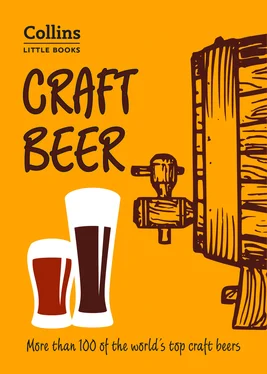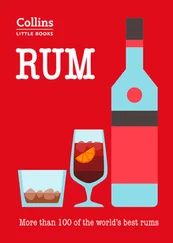But while the supply of new beers was dramatic and impressive, what turned microbrewing into a phenomenon was the seemingly endless supply of keen consumers who were ready and willing to explore tastes and styles. Well travelled and familiar with exotic food and drink abroad, a new generation of drinkers was turning its back on homogenous and globalised products and was starting to seek out drinks with heritage, history and provenance.
There are other factors, too. The new drinkers are a health-conscious bunch, and prefer quality over quantity. But conversely, that also means that they’re more open to sipping one or two pints of stronger alcohol, or drinking smaller 33cl or 25cl measures from a bottle of beer with a high alcohol content, rather than traditional session pints from the tap. Many of them are keen to seek out something new and exciting rather than drink what their parents drank. Many understand that there are craft beer styles that have little in common with traditional bitter or lager, and they not only don’t care, they positively welcome the challenge such beers offer them. Many are eager to learn about them and explore further.
All of this was fuelled by the arrival of the Internet. It allowed small businesses to compete with large ones without the need for big advertising budgets, and to find a ready audience for their creative ideas. Enthusiasts are able to use social media and online blogs to draw attention to their discoveries. The Internet has become an educational tool, helping beer lovers understand more about even the most obscure porters, pale ales or sour beers.
Microbrewing has changed the face of our pubs and bars. The colourful chalkboard, with its zany names, varying ABVs, and brief taste descriptors, has become an increasingly visible road map for scores of patrons who see every trip into a licensed premises as a personal adventure and a journey of discovery. Leading supermarkets have shelves stacked with attractive bottles and, increasingly, cans. Upmarket supermarket chain Waitrose now sells single bottles of craft lagers that cost more than a bottle of wine.
They say what goes up must come down, and there are plenty of people who have predicted that the craft industry can’t defy gravity indefinitely, and that an overcrowded marketplace will inevitably mean that some brewers will crash and burn.
By 2018 there were signs that in America at least, the number of new brewers was peaking, and some are starting to fall away. Inevitably, beer drinkers will separate the wheat from the chaff, and poorer products will not survive. But our palates have been changed forever; we have higher expectations of what beer can and should be, and the days of lifetime loyalty to one or two brands are long gone. If you have any doubts that craft brewing is a fad that will fade and die, then take a long, hard look at what even the most tame outlets are now offering, and at the way the global giants are trying to jump on the microbrewing bandwagon.
Never has it been a more exciting time for beer drinkers.
Cheers – don’t mind if I do.
What is a craft beer?
In late 2017 American organisation the Brewers Association (BA), publishers of craftbeer.com, launched a campaign to crowdfund the purchase of Anheuser-Busch, the makers of Budweiser.
The BA needs to raise a highly improbable – bordering on impossible – $213 billion, and while the campaign, called Take Craft Back, has its tongue firmly in its cheek, the underlying message is a very serious one: craft beer is under threat from global corporations intent on tapping into the large pool of beer drinkers, while stepping on anyone who gets in their way.
By the end of 2017 Anheuser-Busch had bought six craft brewers and was making inroads into major distribution channels. Other international drinks companies have also acquired craft breweries. Their beers are presented as if they are still made in a small farm shed in Michigan, but they are a con. Often they taste nothing like the original version – and this is not a good thing.
So what exactly constitutes a craft or microbrewer? This is not an easy question to answer.
The standard dictionary definition of craft is ‘a skill, particularly in a trade’. This definition works for craft brewing, but it begs the question: isn’t all beermaking a craft under this definition?
Wikipedia defines a microbrewery or craft brewery as ‘one that produces small amounts of beer, typically much smaller than large-scale corporate breweries, and is independently owned. Such breweries are generally characterised by their emphasis on quality, flavour and brewing technique.’
This definition is grossly inadequate and incomplete; the last part is based on subjective evaluation, and there can be no place for that in a watertight definition. And what constitutes small? An American brewer and a British brewer may have very different ideas of what the word means, and one person’s shed may be another’s mansion.
More importantly, if a brewery grows due to consumer demand, but continues to make beer the same way but just on a bigger scale, does it then cease to be a craft brewery? And at what size does this happen?
So size can’t be at the core of our definition of what craft brewing is. And although the word ‘craft’ implies an aspect of quality, our definition can’t be totally about quality either. Big doesn’t necessarily mean bad, as fans of Marston’s Pedigree or Guinness will attest. Conversely, it’s highly unlikely that the retired New York stockbroker brewing his first golden ale will hit on the perfect beer at his first attempt. He will almost certainly not make anything nearly as good as the makers of Adnams, Speckled Hen and many other great beers, perfected by skilled craftsmen over generations.
Wikipedia also has a definition for a microdistillery, ‘… a small, often boutique-style, distillery established to produce beverage grade spirit alcohol in relatively small quantities.’
This is more helpful, because of the word ‘boutique’, which can be used to mean ‘a business serving a sophisticated or specialised clientele’.
This is much better. The definition nods toward the concept of size but makes it an issue of demand as well as supply. The word ‘business’ implies a level of care and professionalism, and by using the words ‘sophisticated and specialised clientele’ some concept of quality is brought into the frame. Not only that, but there is a strong implication that if there was a surge in demand from that sophisticated and specialised clientele, the business would still be a boutique one, even if it correspondingly grew to serve the increased demand.
This works for a definition of craft or microbrewing, too. If someone produces a beer that becomes popular so that the business has to grow to meet demand then, under our definition, this remains a craft operation, providing no compromise is made on the quality of their product, and there is no sell-out of the producer’s original aspirations or ideals.
Perhaps, then, a craft brewery can be defined as ‘any brewery that starts out as an independent boutique operation with the intention of making a bespoke and individual beer, and which stays true to the ideals of creating premium and quality beers no matter what happens to it.’
Under this definition it does not matter whether you’re brewing in a traditional way or attempting something innovative. Nor whether you’re brewing by hand on ancient equipment or have a state-of-the-art microbrewery. And it doesn’t matter what ingredients you decide to use as long as the purpose is to enhance and enrich your beer, and not to save money or cut corners.
Glance at many of the websites of the craft brewers featured in this book and they will have a statement about what they set out to achieve with their beers, or they describe how they came into being. In all cases they would fit the definition above. Anheuser-Busch clearly does not.
Читать дальше












